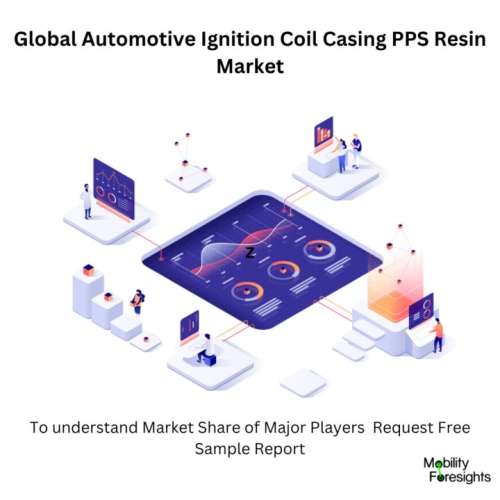
- Get in Touch with Us

Last Updated: Apr 25, 2025 | Study Period: 2023-2030
The range of polyphenylene sulfide (PPS) materials is excellent at resisting heat and chemicals and is tailored for automotive applications.
A wide range of engineering compounds are also included in DIC's PPS series, which are made with glass fiber and/or mineral filler to suit a variety of desirable properties for parts of automotive ignition systems, fuel systems, drive systems, control systems, and cooling systems.
Excellent thermal shock resistance and improved impact qualities are offered by elastomer modified grades that are available.

The Global Automotive Ignition coil casing PPS resin market accounted for $XX Billion in 2022 and is anticipated to reach $XX Billion by 2030, registering a CAGR of XX% from 2023 to 2030.
PPS-based materials, such as composites and blends, have been widely used to meet high-performance requirements, for instance, in aerospace structures like wings, tails, and fuselages in the automotive industry, in motor vehicle engine compartments, pump housings, lamp and headlight bases, and in the renewable energy sector, in wind turbine blades.
The engine compartment of a car, the fuel rail, pump impellers, thermostat housing, throttle body, ignition coil bobbin, micro-precision injection moulded parts, encapsulation of computer chips and other sensitive electronic components, lamp and headlight bases, and pump housings are just a few structural parts that use PPS.
Blends are additionally commonly used in the automotive industry. The usage of polymer mixes in higher quantities on the exterior, interior, and undercarriage parts of automobiles is due to the automotive industry. Although there has been a rise in automakers using PPS, it is still comparatively underutilised.
Bosch proved the viability of using PPS (Ryton® PPS, Solvay) in an active vacuum brake booster connecting the piston for use in sports vehicle braking systems as one of the outcomes of this research.
PPS because of its superior mechanical qualities, resistance to cracking and deformation, as well as its resilience to high temperatures (200 oC), and because of its chemical stability, as the pump was in contact with corrosive substances.
| Sl no | Topic |
| 1 | Market Segmentation |
| 2 | Scope of the report |
| 3 | Abbreviations |
| 4 | Research Methodology |
| 5 | Executive Summary |
| 6 | Introduction |
| 7 | Insights from Industry stakeholders |
| 8 | Cost breakdown of Product by sub-components and average profit margin |
| 9 | Disruptive innovation in the Industry |
| 10 | Technology trends in the Industry |
| 11 | Consumer trends in the industry |
| 12 | Recent Production Milestones |
| 13 | Component Manufacturing in US, EU and China |
| 14 | COVID-19 impact on overall market |
| 15 | COVID-19 impact on Production of components |
| 16 | COVID-19 impact on Point of sale |
| 17 | Market Segmentation, Dynamics and Forecast by Geography, 2023-2030 |
| 18 | Market Segmentation, Dynamics and Forecast by Product Type, 2023-2030 |
| 19 | Market Segmentation, Dynamics and Forecast by Application, 2023-2030 |
| 20 | Market Segmentation, Dynamics and Forecast by End use, 2023-2030 |
| 21 | Product installation rate by OEM, 2023 |
| 22 | Incline/Decline in Average B-2-B selling price in past 5 years |
| 23 | Competition from substitute products |
| 24 | Gross margin and average profitability of suppliers |
| 25 | New product development in past 12 months |
| 26 | M&A in past 12 months |
| 27 | Growth strategy of leading players |
| 28 | Market share of vendors, 2023 |
| 29 | Company Profiles |
| 30 | Unmet needs and opportunity for new suppliers |
| 31 | Conclusion |
| 32 | Appendix |